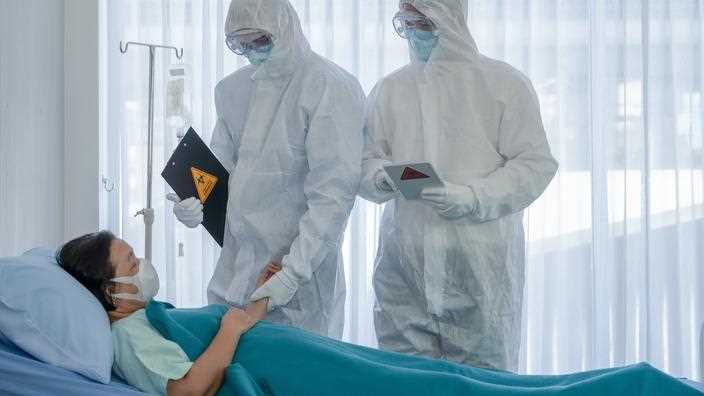In a new study, researchers are trying to plan the impact of the Omicron variant on the hospital system.
208,000 positive cases detected in 24 hours. This unprecedented figure has just been reached by France where the Covid epidemic seems totally out of control. In an attempt to see more clearly, the Institut Pasteur has just published a report on “the impact of the Omicron variant on the Covid-19 epidemic and its control in France“. The group of researchers is modeling different scenarios of contamination and hospitalizations depending on the contagiousness and the dangerousness of the new strain. From the first lines, the study specifies that “these scenarios are made on the basis of incomplete data and uncertain assumptions“. A lack of benchmarks which explains the great diversity of the hypotheses put forward by the researchers.
Read alsoCovid-19: Does banning consumption while standing in cafes and bars make sense?
In the most probable case, indicates the Pasteur Institute, in the light of observations made in the most affected countries such as South Africa or the United Kingdom, there would be between 50 and 80% less risk of being hospitalized after contamination by the Omicron variant than by the Delta. With a medium assumption (77% lower severity compared to the Delta variant), “the peak of hospitalizations could reach 2,700 daily hospitalizations without adjustment of behavior», Write the researchers. And if the French reduce their contacts by 10 or 20% “che peak would go to 1900 (-28%) and 1400 (-48%) daily hospitalizations” respectively. Enough to allow the hospital system to withstand the shock.
SEE ALSO – Covid-19: “maximum concern” in a hospital in Seine-Saint-Denis
Limit contacts
In the somewhat less optimistic case where the severity of Omicron is similar to that of the historic Wuhan virus (i.e. 54% lower than the Delta variant), the epidemic could remain manageable provided the French reduce their 20% contacts. In this case, the peak of daily hospitalization should not exceed 2,500. On the other hand, in the event of excessive transmission, the peak “could be around 5,000 daily hospitalizations“.
Read also“The feeling that we will never see the end of it”: the hospital faced with the challenge of the breaking Omicron
This is the whole objective of the measures announced Monday by the government. Between the generalization of teleworking, the ban on standing service in bars and restaurants or even gauges in stadiums and gatherings, the executive seeks to reduce, even modestly, these meetings which are as many potential contaminations.
SEE ALSO – Olivier Véran: Omicron has become a “tidal wave”
Disaster scenarios still possible
The report, however, does not exclusively examine optimistic outcomes. “Scenarios combining a severity similar to those of the Delta variant or the Alpha variant and a medium or high transmission advantage could lead to peaks of hospitalizations largely exceeding the peaks of 2020 in the absence of strong control measures.“, Warn the researchers.
Read alsoCovid-19: this treatment which remains effective against Omicron
Another outcome to help control the epidemic and fight against a tidal wave of hospitalizations: vaccination. “ Vaccinating 90% of unvaccinated adults at a rate of 100,000 doses administered per day as of December 19, could reduce the size of the peak hospitalizations by 17%, 26% and 35% for a benefit of Omicron transmission by compared to Delta high (84%), intermediate (67%) and low (54%) », Write the researchers.
SEE ALSO – Covid-19: “90% of patients in intensive care are people who have not received their recall”, assures Boris Johnson
